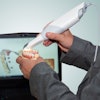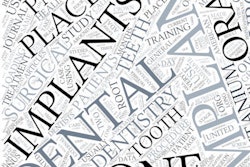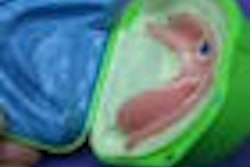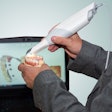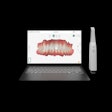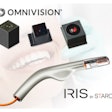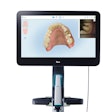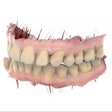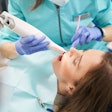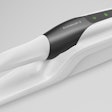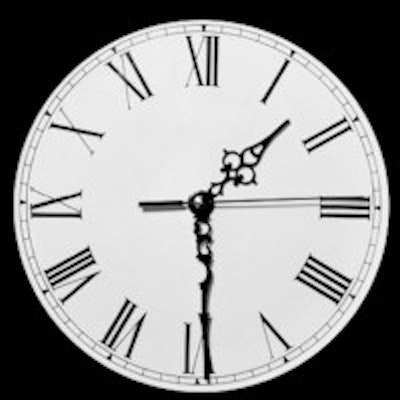
As intraoral scanners have been introduced to the market, their functionality has been measured and tested extensively. However, ancillary aspects of these relatively new devices have yet to be examined -- including their time efficiency. A full schedule is key to a successful practice, and a new study from researchers in the U.S., Switzerland, and Germany may help clinicians choose an intraoral scanner that maximizes efficiency.
Their results, published in Journal of the American Dental Association, fill a gap in information that was previously supplied by those with a stake in how these devices are perceived (June 2014, Vol. 145:6, pp. 542-550). "There are no official statements on the time needed to scan a specific scenario. Just salesmen of the companies tell you that their system is much faster than the other one," lead researcher Sebastian Patzelt, DMD, Dr med dent, a visiting research professor at the University of Maryland School of Dentistry in Baltimore wrote in an email to DrBicuspid.com.
Interestingly, he and his fellow researchers found that several very significant disparities arose when they measured the time needed for each system to perform an assigned task.
“We did not expect a difference of up to 20 minutes.”
"We anticipated a superiority of the intraoral scanners regarding time efficiency, but we did not expect a difference of up to 20 min," Dr. Patzelt explained.
While preparing for their own research, Dr. Patzelt and his colleagues found a single previous study that compared the time efficiency of digital versus conventional impression-making techniques. The former had a swifter mean total treatment time of 12 minutes, 29 seconds compared with 24 minutes, 42 seconds, the study authors concluded.
From there, Dr. Patzelt's team found no work comparing different digital options. "Nobody has done it before," he stated. "So we decided to evaluate the efficiency of this emerging technology. It definitely is an important consideration with regard to an efficient workflow, cost savings, and time management."
Their in vitro investigation tested three different computer-aided impression-making (CAIM) systems: Cerec Acquisition Center (AC) with Bluecam (Sirona) and Cerec 3D Service Pack Version 3.85, iTero (Align Technology) and iTero software Version 4.0, and Lava Chairside Oral Scanner (C.O.S.) (3M ESPE) and Lava Software Version 3.0. The Cerec AC and the iTero systems have an optional foot pedal for the capture procedure, so the researchers tested these intraoral scanners for time efficiency with and without them for a total of five different systems.
Each was used in three different scenarios simulating a treatment situation five times prepared by the researchers:
- First maxillary right molar for a single abutment
- Second maxillary right premolar and second molar for two abutments, single-span fixed dental prosthesis (FDP) preparation
- Entire maxilla, full-arch preparation for 14 abutments
One researcher performed all the scans. For each sequence, the researchers switched on the system, booted up the operating system and software, entered fictional patient and treatment plan information, scanned, and process the data. Then they shut down the system for 10 minutes to allow them to cool down and applied antireflective coating to the Cerec system, a light powdering on the Lava system, or no coating for the iTero system. They measured the time spent for the hardware startup, software setting, powdering, or coating where necessary, scanning the abutments, scanning the antagonists, bite registration scan, and data processing, the researchers explained.
"Basically, they are all the same. There is a wand one uses to capture the surface of the teeth. But there are camera-related technological differences (point-and-click and video systems, powder/no powder) that influences the performance of the capturing process, as well as the user friendliness of the user interface," Dr. Patzelt noted.
For comparison, the researchers took the manufacturers' time frames described for making conventional impressions for the same three scenarios, tallying the adhesive's recommended drying time, processing time, the materials' setting time, and the disinfectant application time.
The researchers used the following:
| Impression material | Adhesive | Antagonist impression | Bite registration | Disinfectant |
| Normal-setting | ||||
| Impregum Penta Soft (3M ESPE) | Polyether tray adhesive (3M ESPE) | Palgat Plus (3M ESPE) | Greenbite Apple (Dentax) | Immersion disinfectant (Picodent) |
| Affinis Precious & Affinis heavy body (Coltène/Whaledent) | Adhesive AC (Colètene/Whaledent) | |||
| Identium Light & Identium Medium (Kettenbach) | Identium adhesive (Kettenbach) | |||
| Fast-setting | ||||
| Impregum Penta Soft Quick Step | Polyether tray adhesive | Palgat Plus Quick | ||
| Affinis Precious & Affinis fast heavy body | Adhesive AC | |||
| Identium Light Fast & Identium Medium Fast | Identium adhesive | |||
In their statistical analysis, the researchers learned that the CAIM approach was as much as 23 minutes faster than conventional impression making when the total time needed was taken into consideration -- for all three scenarios.
The Cerec AC with Bluecam system was swiftest in the single-abutment and single-span fixed dental prosthesis preparation scenarios, producing the best time without a foot pedal in the former and with one in the latter. Lava C.O.S. was the fastest for full-arch prosthesis preparation.
"Focusing on the actual intraoral working time -- in other words, the time that the dentist needs to scan or make a conventional impression -- revealed the digital approach to be superior," the researchers wrote.
| Equipment/material | Single abutment | Single-span fixed dental prosthesis preparation | Full-arch prosthesis preparation |
| Total time: minutes, seconds (intraoral working time) | |||
| iTero | 5:41 (2:16) | 6:06 (2:24) | 20:17 (7:55) |
| iTero w/foot pedal | 5:57 (2:29) | 6:15 (2:41) | 20:55 (8:36) |
| Cerec AC | 4:16 (1:14) | 5:05 (1:37) | N/A |
| Cerec AC w/foot pedal | 4:30 (1:18) | 5:02 (1:47) | N/A |
| Lava C.O.S. | 5:51 (2:50) | 6:57 (3:35) | 17:20 (10:51) |
| Impregum Penta Soft | 23:25 (12:50) | 26:25 (15:50) | |
| Impregum Quick Step | 18:45 (8:15) | 21:45 (11:15) | |
| Affinis Precious & Affinis heavy body | 20:55 (9:55) | 23:55 (12:55) | |
| Affinis Precious & Affinis fast heavy body | 18:15 (7:15) | 21:25 (10:15) | |
| Identium Light & Identium Medium | 27:25 (12:25) | 30:25 (15:25) | |
| Identium Light Fast & Identium Medium Fast | 22:45 (7:45) | 25:45 (10:45) | |
The researchers found statistically significant differences in the scanning times for all three scenarios between all applicable scanners (p< 0.05), outside of the performance of the same scanner with or without the foot pedal option.
In the first scenario, the Cerec AQ with Bluecam had the swiftest total time in the first scenario, while the same device with a foot pedal and the Lava C.O.S. had the swiftest total times for the second and third scenarios, respectively. Among the conventional impression materials tested, Affinis Precious and Affinis fast heavy body narrowly beat Impregum Penta Soft Quick Step in all scenarios tested.
The researchers acknowledged that, while conventional materials take more overall time, clinicians can use them and their time efficiently by division of labor within the dental team. After all, "not all steps have to be performed by a clinician," they noted. "Further studies are necessary to evaluate whether sharing steps among members of the dental team affects needed chair time."
But in the current study, the more efficient option is clear: "Using CAIM results in a more time-efficient work flow than that possible with conventional impression making," the authors concluded.
